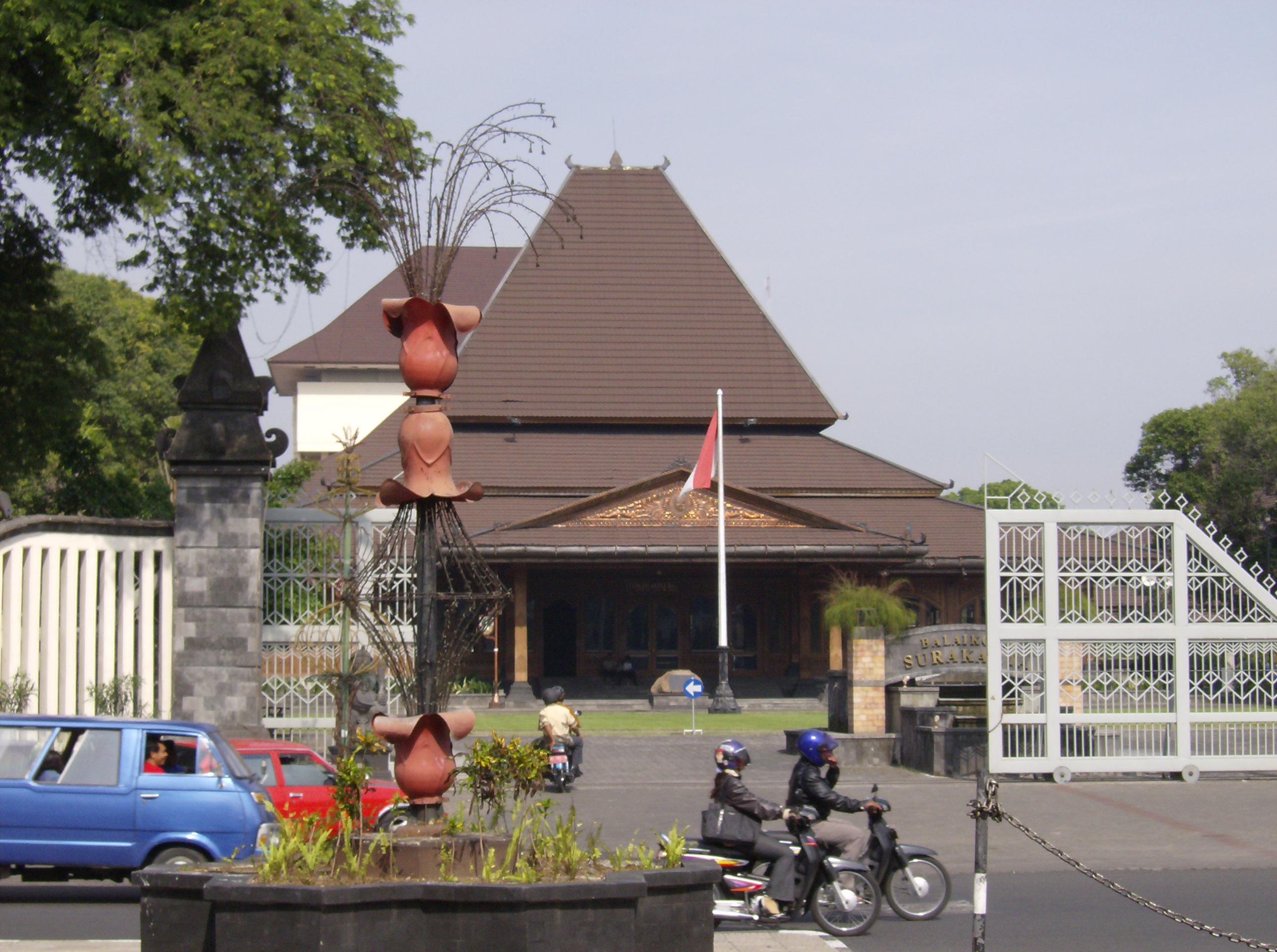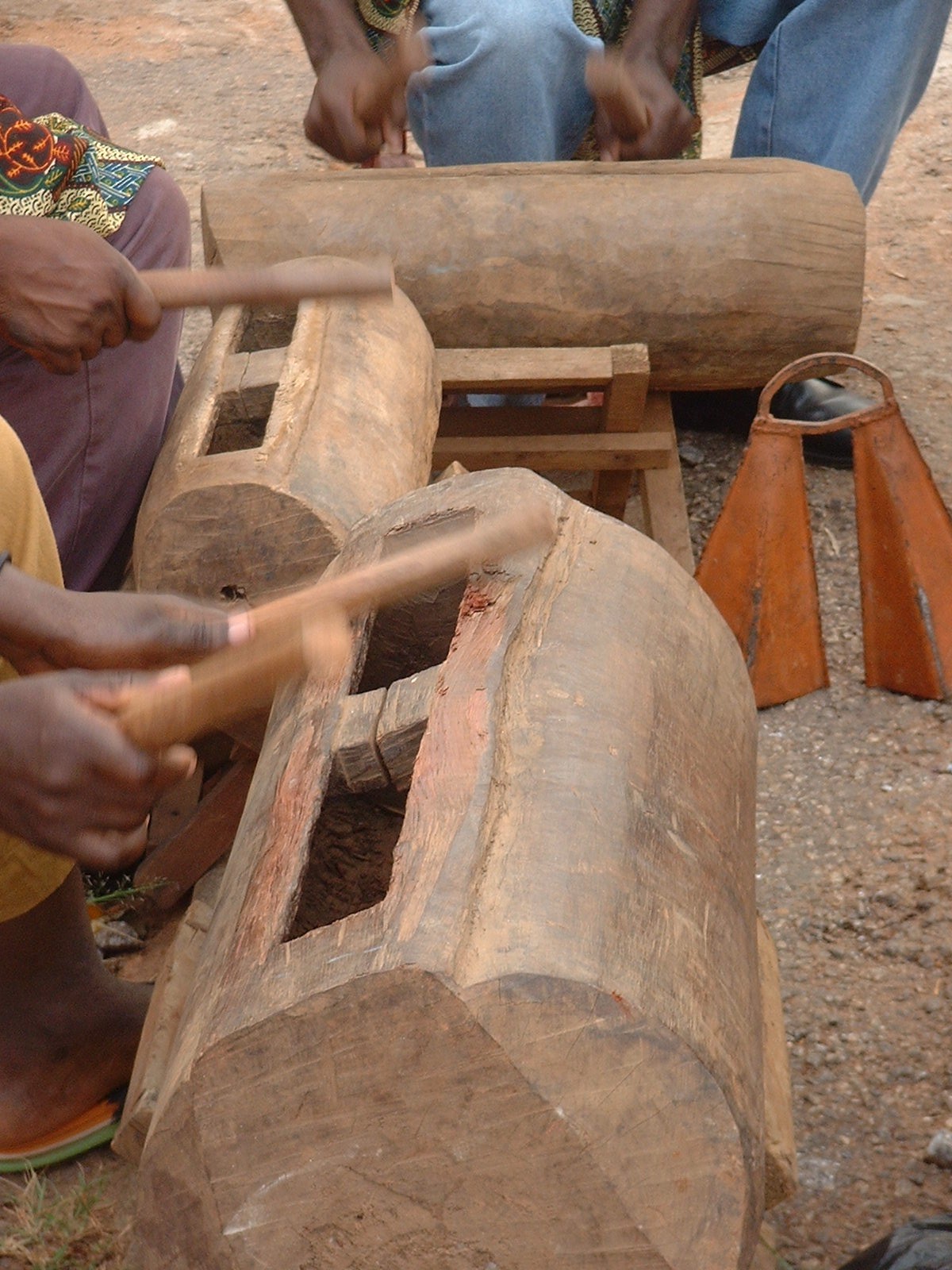|
Great Mosque Of Surakarta
The Great Mosque of Surakarta (; ) is an 18th-century Javanese mosque in Surakarta, Central Java, Indonesia. It is the royal mosque of the Surakarta Sunanate. History The Great Mosque of Surakarta was built by Sunan Pakubuwono III in 1763. The mosque was completed in 1768. The mosque was both a jami mosque (mosque for Friday prayer) and a royal mosque (mosque for ceremonies or rituals related to the royal). Traditionally, the mosque also served as a judiciary in matters of religious significance. The fence was added for the mosque complex in 1858 during the reign of Sunan Pakubuwono VIII. A Mughal architecture-inspired minaret was built in 1928 during the reign of Sunan Pakubuwono XI. The mosque Surakarta Great Mosque is located within a 19,180 sqm complex surrounded by a solid wall. The design of the Great Mosque of Surakarta follows a conservative Javanese architecture principle. It basically consists of two buildings: the main prayer hall and the front hall (). The mai ... [...More Info...] [...Related Items...] OR: [Wikipedia] [Google] [Baidu] |
Surakarta
Surakarta (Javanese script, Javanese: , Pegon script, Pegon: ), known colloquially as Solo (Javanese script, Javanese: ; ), is a major List of regencies and cities of Indonesia, city in Central Java, Indonesia. The city adjoins Karanganyar Regency and Boyolali Regency to the north, Karanganyar Regency and Sukoharjo Regency to the east and west, and Sukoharjo Regency to the south. On the eastern side of Solo lies Solo River (Bengawan Solo). Its metropolitan area, consisting of Surakarta City and the surrounding six regencies ("Greater Solo Area", formerly Special Region of Surakarta), was home to 6,837,753 inhabitants according to the official estimates for mid 2023, 526,870 of whom reside in the city proper. Surakarta is the birthplace of the President of Indonesia from 2014 to 2024, Joko Widodo, as well as his son and current Vice President of Indonesia, Gibran Rakabuming Raka. The former served as Mayor of Surakarta from 2005 to 2012, as did the latter from 2021 to 2024. His ... [...More Info...] [...Related Items...] OR: [Wikipedia] [Google] [Baidu] |
Slit Drum
A slit drum, or slit gong, is a hollow percussion instrument, often made out of wood or bamboo. In spite of its often being called a drum, it is not a true drum, because it lacks a ''drumhead'', the membrane (made out of animal skin or plastic) stretched across the top of a true drum. It is classed instead as an idiophone in which the entire instrument vibrates. Description A slit drum is usually carved or constructed from bamboo or wood, in the form of a mostly closed hollow chamber with one or more slits in it. It is played by striking near the edge of the slit. In some designs, the slit is a single straight line; in others, the slit is used to create one or more "tongues", achieved by cutting three sides of a rectangular (or similar) shape and leaving the fourth side attached. Most slit drums have one slit, though two and three slits (often resembling an "H" and thereby forming two tongues) occur. Tongues of different areas or thicknesses will produce different pitches. Slit ... [...More Info...] [...Related Items...] OR: [Wikipedia] [Google] [Baidu] |
Mosques Completed In The 1760s
A mosque ( ), also called a masjid ( ), is a place of worship for Muslims. The term usually refers to a covered building, but can be any place where Islamic prayers are performed; such as an outdoor courtyard. Originally, mosques were simple places of prayer for the early Muslims, and may have been open spaces rather than elaborate buildings. In the first stage of Islamic architecture (650–750 CE), early mosques comprised open and closed covered spaces enclosed by walls, often with minarets, from which the Islamic call to prayer was issued on a daily basis. It is typical of mosque buildings to have a special ornamental niche (a ''mihrab'') set into the wall in the direction of the city of Mecca (the ''qibla''), which Muslims must face during prayer, as well as a facility for ritual cleansing (''wudu''). The pulpit (''minbar''), from which public sermons (''khutbah'') are delivered on the event of Friday prayer, was, in earlier times, characteristic of the central city mosque, ... [...More Info...] [...Related Items...] OR: [Wikipedia] [Google] [Baidu] |
Religious Buildings And Structures Completed In 1768
Religion is a range of social system, social-cultural systems, including designated religious behaviour, behaviors and practices, morals, beliefs, worldviews, religious text, texts, sanctified places, prophecies, ethics in religion, ethics, or religious organization, organizations, that generally relate humanity to supernatural, transcendence (religion), transcendental, and spirituality, spiritual elements—although there is no scholarly consensus over what precisely constitutes a religion. It is an essentially contested concept. Different religions may or may not contain various elements ranging from the divine, sacredness, faith,Tillich, P. (1957) ''Dynamics of faith''. Harper Perennial; (p. 1). and a supernatural being or beings. The origin of religious belief is an open question, with possible explanations including awareness of individual death, a sense of community, and dreams. Religions have sacred histories, narratives, and mythologies, preserved in oral traditions, sac ... [...More Info...] [...Related Items...] OR: [Wikipedia] [Google] [Baidu] |




